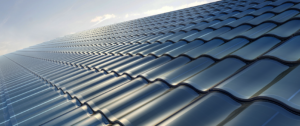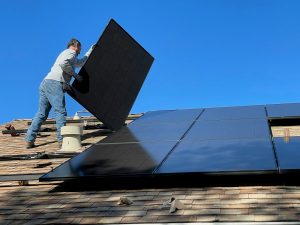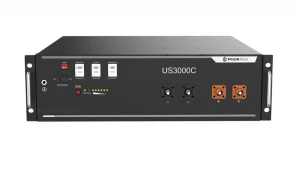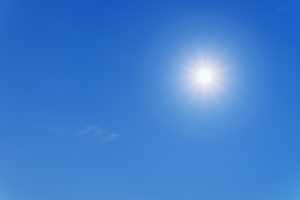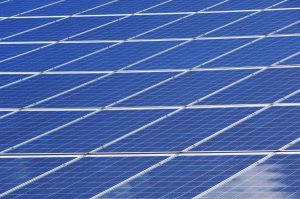How much power do solar panels produce per square meter?
To answer this, there’s a number of factors to consider. If you want to know how many solar panels you need for your situation, use our calculator.
Firstly, there’s the amount of sunlight actually hitting the earth:
“At Earth’s average distance from the Sun (about 150 million kilometers), the average intensity of solar energy reaching the top of the atmosphere directly facing the Sun is about 1,360 watts per square meter, according to measurements made by the most recent NASA satellite missions.”
However, not all of that filters through the atmosphere. And because the Earth is a sphere, solar panels will often be at an angle to the Sun rather than straight on. On top of that, the best solar panels on the market are still only around 22-25% efficient.
Table – Compare solar panel power production for cities in US and UK
| Location | Average Daily kWh output for 1m² of a 540wp panel |
|---|---|
| London | 0.49 |
| Edinburgh | 0.43 |
| New York | 0.69 |
| LA | 0.86 |
| Austin, TX | 0.79 |
What do solar panels produce per m²? Six factors to consider.
The amount of power solar panels produce per square meter varies depending on the type of solar panel, where it’s located, which way it’s facing, and the time of year.
1. The region where you livea
As you can see in the table above, different parts of the world get vastly different amounts of solar energy. If you’re closer to one of the poles, you’ll get a lot less sunlight (none in some cases as I learnt when I spent some time in Northern Norway) in winter. Even the distance between London and Scotland makes a noticeable difference.
2. The power of the panel in Watt peak (Wp)
Solar panels are typically marketed with a “watt peak” number. This is the amount they should produce in ideal conditions. Our calculator is based on one of the most efficient solar panels on the market, a 540wp model from Jinko Solar. A higher watt peak number means more energy output per square meter.
3. The slope of your roof
Solar panels work best when they are directly facing the sun. Unless you have a solar tracker installed (which in most cases isn’t worth the extra cost), then the fixed angle they should be installed at depends on your location. That could be 20-50º.
4. Orientation / direction of your roof.
The orientation of your roof (or wherever the panels are installed) makes a large difference. In the northern hemisphere, it’s typically best to have south facing panels.
5. The time of year
During winter there is a lot less total sunlight, and it’s more likely to be cloudy on top of that. Our calculator gives you an average for the whole year and also a breakdown month by month in your location.
6. Efficency of the rest of the electrical system
The useable output of the actual solar panels depends on the rest of the system. The inverter, wiring, and charge controller if using a battery. These all impact how much useful electricity is able to be captured, and how much is wasted.
How many square meters of solar panels do you need?
Try our solar panel cost calculator if you want to work out what size of solar system you need to save money whilst being grid-tied. We’ve also written in more detail here about how to do these solar panel calculations yourself.

